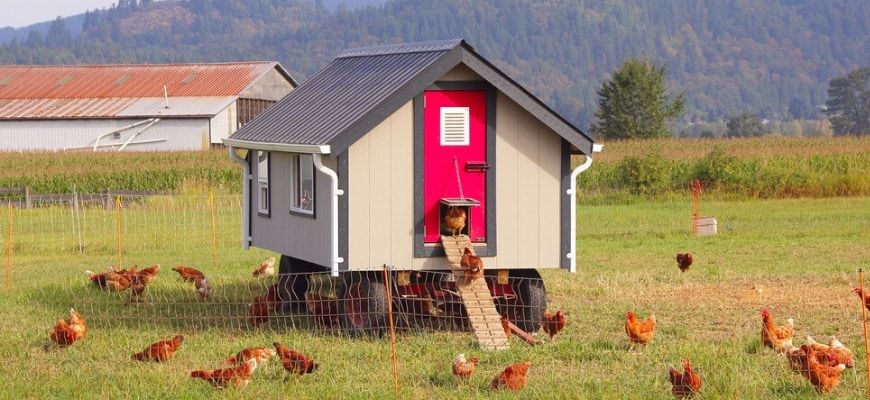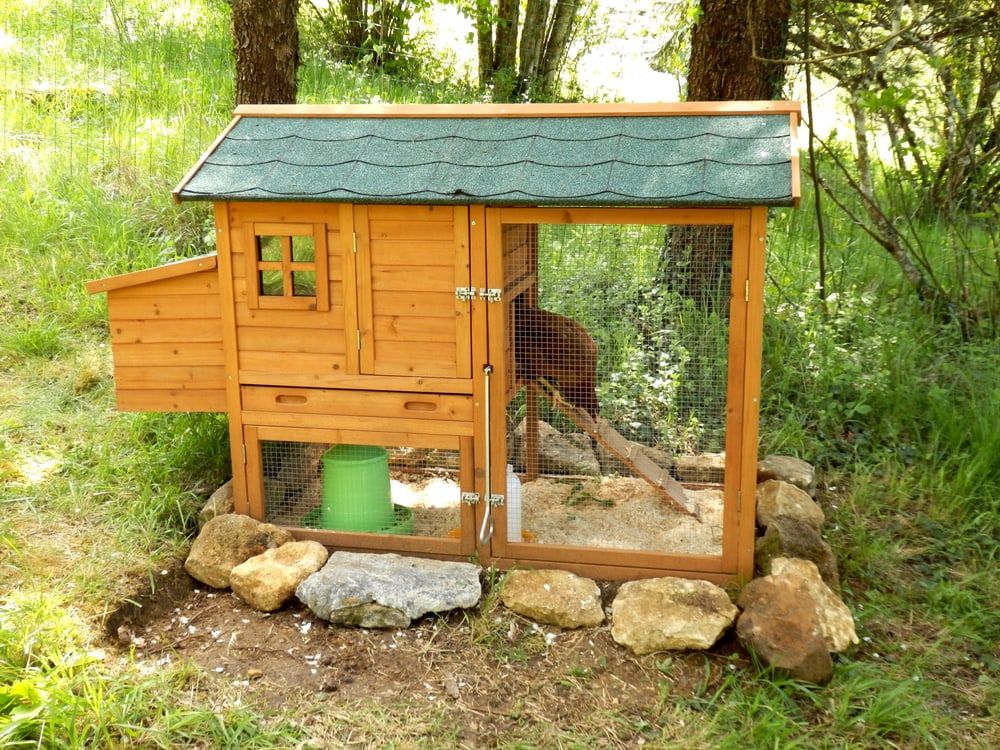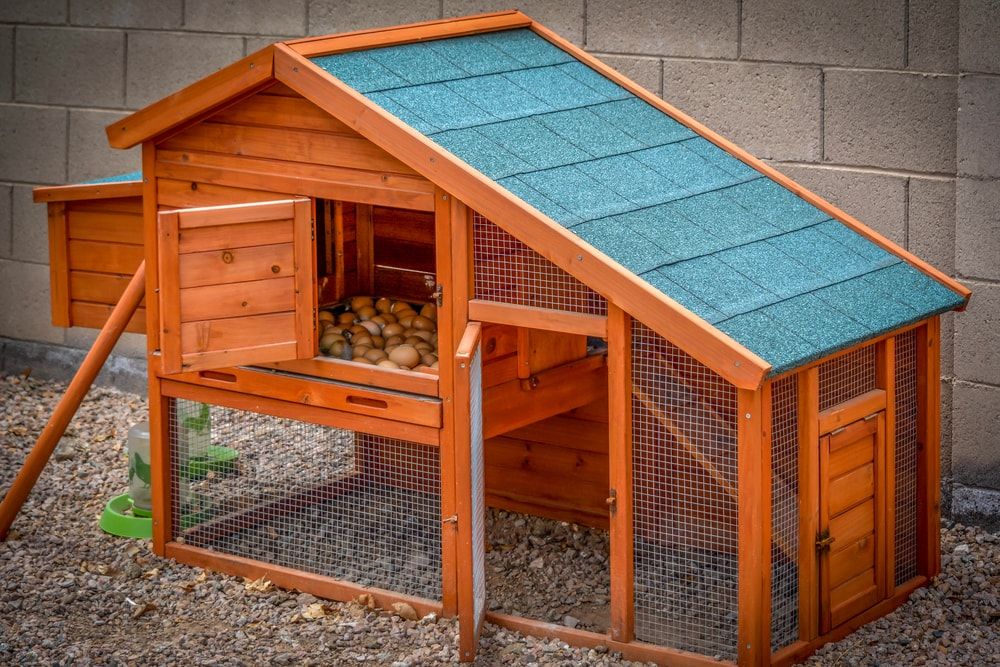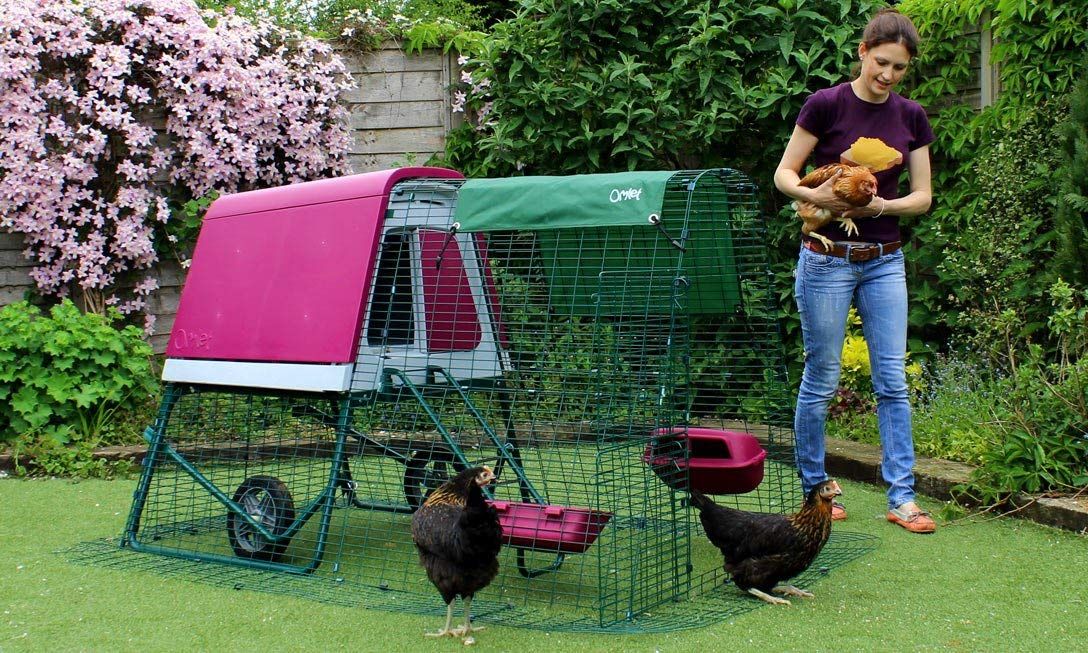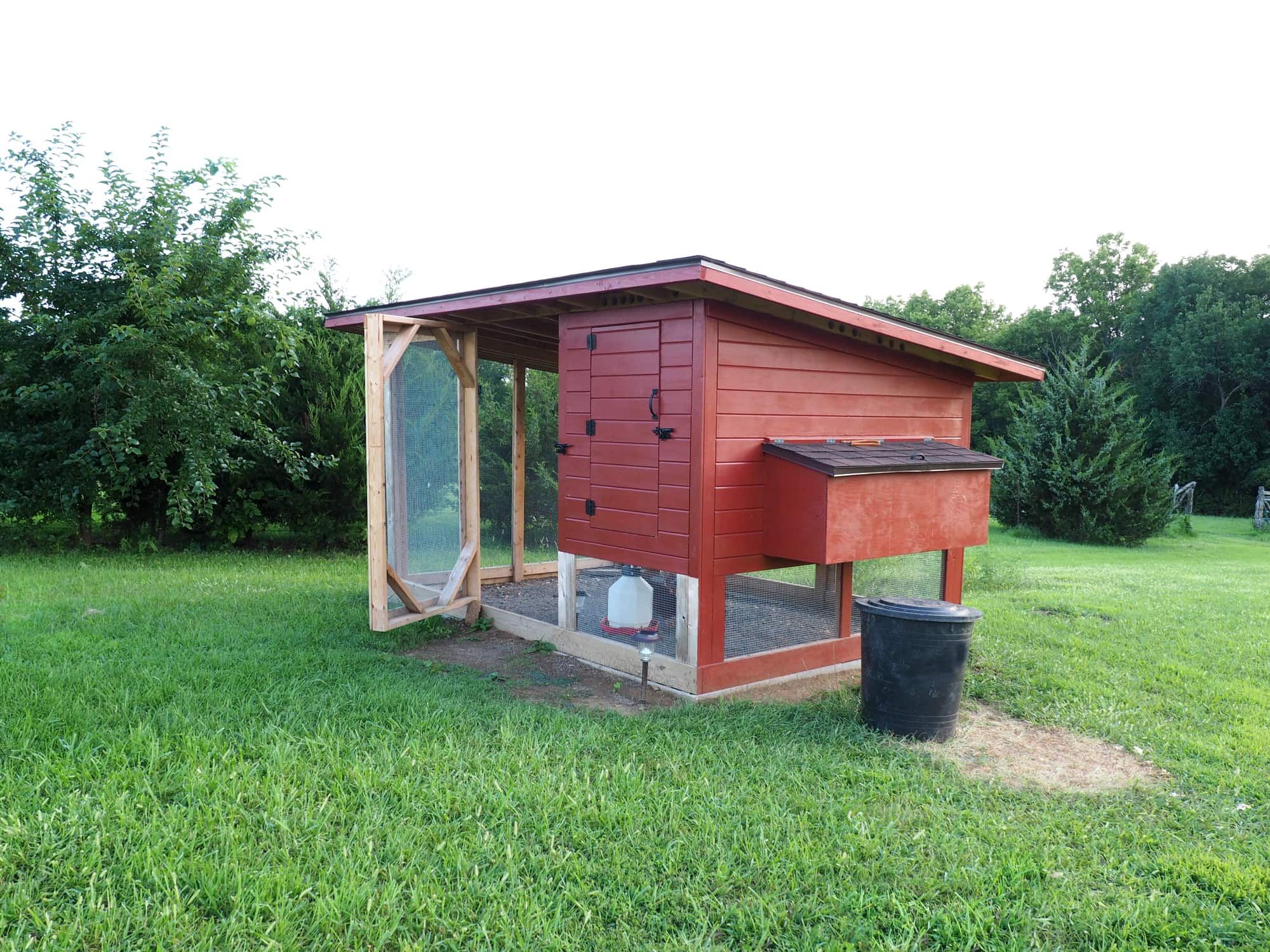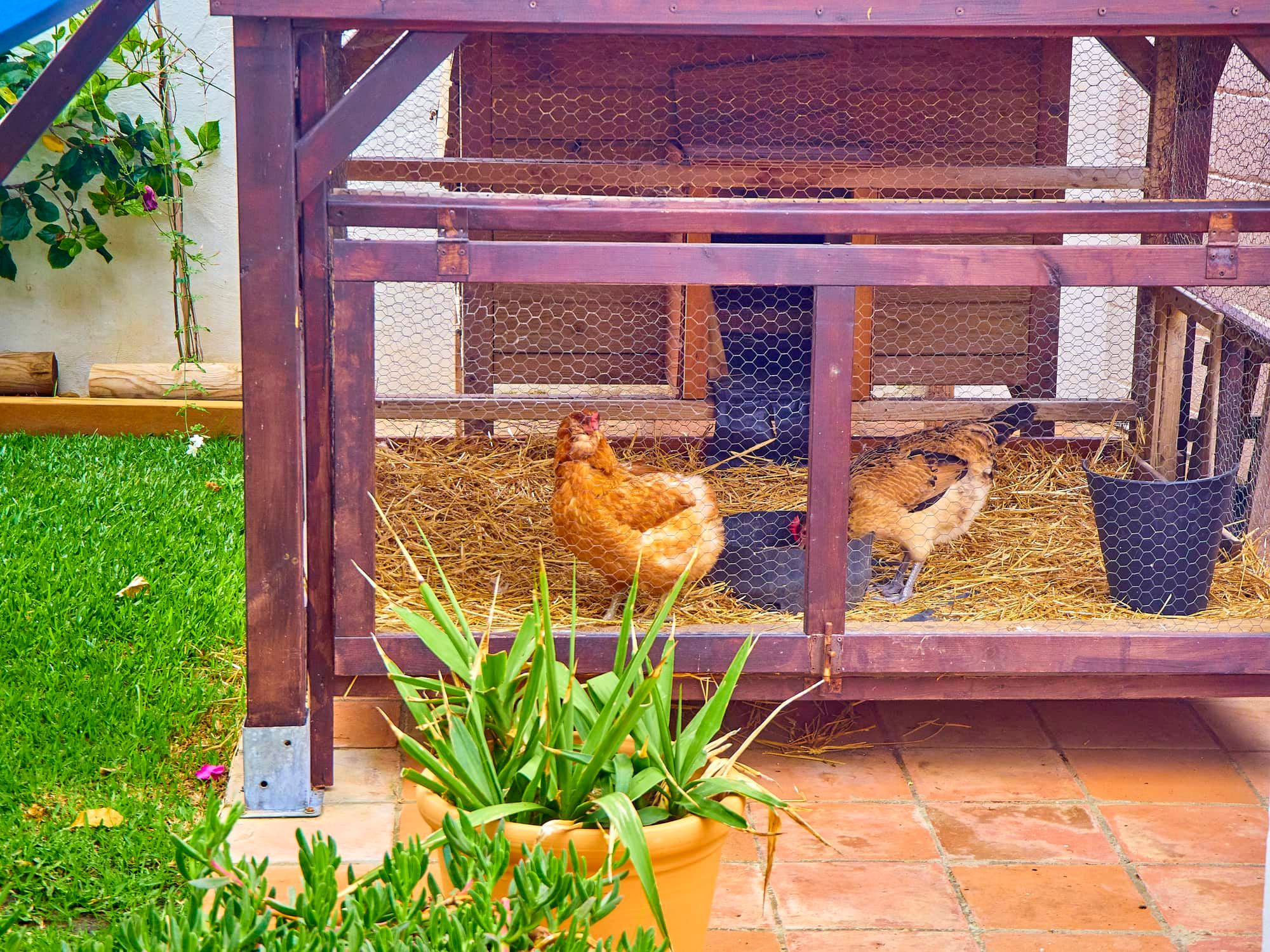Whether you keep a large flock or small flock, are new to poultry keeping, or an old pro, knowing what types of chicken coops are available for your animals is an important part of keeping them healthy and happy. I’ve kept chickens for over 15 years, and with 4 moves and changes in flock size I have been impressed with the various ideas I’ve seen come to light with advances in technology, as well as an increase in backyard chicken owners.
Having ideas to help accommodate your flock allows you to determine what is best for your budget, and apply ideas for both DIY as well as pre-fabricated coops. I constantly keep my eye open to new or different ideas to make changes or additions to my flock’s living spaces.
What Your Flock Needs
No matter the amount of chickens you keep, you need to provide both a place for them to roost each night, and a place to roam during the day. If you don’t provide a coop, chickens will find places to ‘put themselves to bed’ as the days begin to wan. This may be in open barns or sheds, in trees, on axles under vehicles, on rooftops, or anywhere else they feel safe.
Unfortunately, this does leave them exposed to predators and also gives them an allowance to lay their eggs wherever they see fit. When you provide a coop and make them familiar with it, they will come back to it each night, and also use the space to lay their eggs. Generally, you need to provide 2 to 3 square feet of space for each chicken, but this includes the vertical height of your coop as chickens will roost on any perches you provide. One nesting box per 3-5 hens is also acceptable as they will share.
Personally, I also believe and enclosed (or partially enclosed) run is also important to their overall well being. Free run chickens that have no boundaries may be happy, but they also will disappear from time to time. Even if your own property is secure, hawks, eagles, owls, foxes, cats, weasels, coyotes, and passing stray dogs are all unexpected visitors in many areas. Provide up to an 8 x 8 area for each chicken if possible, although smaller spaces are perfectly acceptable with proper care.
What a Coop is, Specifically
In short, a coop is a structure your chickens live in. Although the word coop is specific to the protective housing you provide to your poultry, it is often used synonymously with both the combination of the housing and connected outdoor run your chickens live within. A coop provides protection from both weather and predators, and allows a safe, secure place to lay within.
Benefits of a Coop
A coop is an absolute must for the long term protection of your chickens. This way you can more easily recognize and eradicate any predator problems that may arise, keep track of your chickens, and get to the eggs that are laid without having to go on a scavenger hunt (if that is your purpose of keeping hens).
Protect Against Predators
Even though both hens and roosters can become very territorial and protective, and be willing to attack or fight a predator, the bottom line is they are small, lightweight, and not much of a match against most animals that will hunt them for food. Roaming dogs, foxes, coyotes, birds of prey, and even weasels or mink are infamous for going after chickens during the day, as well as while they sleep. Using a coop, especially one you can close up for the night, keeps them safe from even the most wily of predators.
Protect Against Weather
Chickens are actually very hardy, and can survive sub-zero temperatures with ease. However, that doesn’t mean you should leave them out at the mercy of the elements without the ability to get in out of the cold, wind, heat, or rain. This is especially important at night since chickens are basically blind in the dark and won’t rouse themselves to get someplace safe if the weather takes a turn for the worse.
Count Your Chickens!
Keeping a head count is part of being a responsible chicken owner. This helps you know if somebody is looking sick or injured, or is missing so you can determine why. If you have an enclosed space you can much more easily figure out how everyone is doing, and track down any errant stray you may have- especially since hens that go broody may like to try to hide a nest. And then you will have more chickens to count.
Gathering Eggs
Chickens love to lay their eggs wherever, and unless you provide them a specific spot you will most likely be playing hide-and-seek with eggs on a daily basis. A coop with nesting boxes and a good floor covering other than a bare surface or sand will allow them the material to make a nest. Multiple hens will share a nest to lay in as well.
Types of Coops to Consider
There are various types of coops you can consider, especially if you begin to look at the many different DIY ideas people have created. But to make this easy to understand, I have broken up coop types into three major categories: stationary coops, chicken tractors, and semi-permanent coops.
Stationary Coops
Stationary coops are exactly how they sound: coops that cannot be moved. These typically are either existing structures made for, or turned into a coop- or are built specifically as part of a structure or addition to be used as a coop. They have permanent structure to their walls, and may even have a concrete floor.
Most of these are of a DIY variety and are bought as a building kit, personally designed, or converted from a shed or other structure already in place. There are many amazing plans and blueprint patterns you can consider.
Chicken Tractors
Chicken tractors aren’t actually tractors, but rather the accepted term for an easy to move coop. These coops typically have a run and coop combination that has a mobile point set on wheels for easy mobility. These are popular for small flocks and in areas that have smaller yards so you can allow your chickens a fresh area every few days.
Although there are many pre-fabricated designs you can find for purchase, this style is also typically easy to make as well on your own.
Semi-Permanent Coops
Semi-permanent style coops are probably the most popular simply because they encompass a wide variety of styles that you can both purchase, or make. These coops are more or less designed to stay in place, but can be moved if needed- or even modified to be moved or pulled seasonally, or simply because you want to. For example, after you harvest a garden overwintering your chickens there provides them with cast off seeds and vegetation as well as fertilizer for your soil.
These can be raised coops or coops that set on the ground and be used in conjunction with a fencing system that is easy to move when needed. Some people plan ahead and place their coop on slabs that can be pulled from place to place, while others may need a lifting team to get it from place to place.
There are actually a lot of prefabricated coops that fall into this category, as well as online plans in abundance to help you get an idea of what you might want to have. The bottom line is you want to provide your chickens with a safe place that keeps them happy and producing.
Coop Details
No matter what type of coop you decide on, you want to be sure you provide the following details based on your own climate.
Flooring and Floor Covering
A permanent coop may have a bare floor, concrete, or even raised wooden floor. Anything permanent or semi-permanent will generally use bare ground, wood, or plastic. A floor covering is also popular to help with cleaning and moisture control. Sand is often used in permanent structures while straw and wood chips may be used in any structure.
Nesting Boxes
Providing a specific place for your chickens to nest makes it much easier for you to collect eggs, and also a quiet place for them to nest away from the rest of the flock. You can add nesting boxes to any coop, or even build them as an extension with easy access for collection. Be sure to use soft materials they can nest with, such as straw and wood chips.
Roosting Perches
Chickens like to perch when they sleep, and providing a row of perches up to 8 inches from the top of the coop allows them to pick and choose where they are comfortable. Giving them this space will also help deter them from staying outside at night, as well as from perching along nesting boxes.
Insulation and Air Flow
Chickens regulate their body temperature very well due to their thick feathers, but if your coop holds moisture you will be undermining their ability to stay warm. Be sure to insulate against bitter cold, extreme heat, and wet weather, but also make sure you have good airflow through the coop. Fresh air and air vents allow excess moisture to dissipate and fresh air to circulate.
Cleaning Accessibility
Keeping your coop clean is important to poultry health. Good, absorbent materials will help control waste moisture, smells, and buildups, and also will allow you to clean your coop that much easier. Placing easy to remove mats can help you control the majority of the waste, and easy access doors will help you clean the entirety of the coop with ease.
Conclusion
Coops can be made from an amazing array of things, both stationary as well as portable. Take advantage of sheds or other outbuildings not in use, or create a DIY portable chicken tractor. Whatever you decide, your chickens will be grateful for the protection and place to nest.
Remember to keep in mind the comfort you provide to roost and lay, as well as your own ease of cleaning. Good airflow is a must as well.
We’d love to see your coop ideas below, as well as answer any questions you may have. As always, please share!


